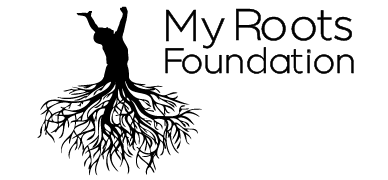26 Mar
2017
How to Avoid Pitfalls In Family History Discovery and Sharing – Part Three
Avoid Pitfalls In Family History Discovery and Sharing
Part Three
In your family history detective work, you should strive to avoid pitfalls. The family discovery you put out is just plain wrong. You have published as fact – information on the wrong family, family lore or myth.
Question. How could I have been so wrong?
If you spend 15 minutes talking with anyone whose done family research for any length of time and you will hear about agony of chasing down the wrong family thinking they were your kinsfolk. Researching family history involves a fair amount of guesswork and uncertainty. Either earlier researchers may have entered the wrong information. Mistakes can be made in transcriptions of documents from one location to another; even tombstones are known to sometimes have mistakes. In visiting my own family cemetery, I can see family members with the same last name buried side by side, and there are variations in the spelling of the family name. Census takers made mistakes in the spellings of names (and even dates and places of birth). Since there is a lot of room for human error in family history research, I want to talk about three of the most common ways we get to this problem. The answer is the same no matter what leads you to this mistake.
Answer. You do not know and did not verify your sources.
Problem – same/similar names
The problem arises because of name similarities. Yes, it is possible to find multiple families with mom, dad and the kids having the exact same names as found in another unrelated household. I found this particularly frustrating in my own family as we have a habit of re-using names. Re-use to the point that I have a cousin Phyllis, with a daughter named Fannie, who decided to name her daughter named Willie Mae. Just like my other great grandmother Phyllis and her daughter Fannie, whose daughter is, yes, you guessed it – Willie Mae! Really people!!!
Problem – poorly documented sources
It is very easy to attach the wrong person to your family tree and begin tracing the wrong family. This can also happen when multiple, but conflicting, sources are found for the same event. Careful analysis is required to determine which, if any, might be accurate.
So there you have it. Two ways you can miss-identify folks when searching for relatives. What can you do to avoid this pitfall?
As you go, you should always keep track of all the resources you use. It can be easy to forget where this information comes from and can be difficult to assemble it all AFTER the fact; so document as you go. When you get new information, write down where you got it. I always try to record the source by noting the URL if it was a website, if my source is a book, record the title, the author, publisher, and even the ISBN or ISSN number.
Next, lets talk about verbal sources. If you get oral history information, write down who is giving the info and when you got it. Not a bad idea to note the place also. Something like “as told to me over dinner by Cousin Dot at the 2005 Doby family reunion.” Information is a big part of family history research so make sure you know where your information comes from. And speaking of oral history interviews… Do not rely solely on Your Family’s Oral History. Do you remember playing the game ‘telephone’ when you were a kid? Stories change as they are passed on down the line.
While most family oral history stories have some grain of truth to them beware putting too much confidence in the family lore. Always research the facts behind family stories before recording them on your official family tree. I grew up hearing the story that my great grandfather was lynched (reportedly for looking at a white woman). I spent a lot of time searching lynching in America records only to find that the story was NOT true.
Finally, let’s talk about electronic data. When using electronic data, be sure to check your sources and never be guilty of just copying information off an online family tree. Just because someone posts a family tree online does not mean the information in it is correct. Before you use anyone else’s genealogical information, be sure to double-check it.
Problem – not enough sources
Next, do not neglect “certain” sources. It is cool to say good-bye to friends and family and tell them you are off to the library to comb thru 100-year-old census records. But do not limit yourself to just census research and collecting birth, death, and marriage certificates. Don’t be afraid to comb thru prison records and State execution rolls and other less glamorous sources.
Check out resources like Cyndi’s List – Prisons, Prisoners & Outlaws – General Resources, Criminal records – Ancestry or Blacksheep Ancestors
You must use all available sources. Valuable insights can come out of land records, military records, tax records, city directories, immigration records, court records, wills and probate records, old newspaper articles, and more. You must think like an investigative detective as you look for clues to your ancestor’s life.
In summary
This series has brought up some important ways that your family history research might go horrible wrong. However, the biggest pitfall to avoid – giving up. Do not be disheartened. The fact is, except for biological mother/child relationships, genealogy is never a 100 percent sure thing. Even the best, most carefully carried out research can still potentially be proven wrong by a future researcher who discovers a clue no one else noticed or information that has just recently come to light.
Anything worth doing is hard. Inspiration is greatest when you see it at the end of a long tunnel of obstacles. Do not give up. You’re allowed to curse the family naming pattern that gave you a grandmother, an aunt and a cousin named Phyllis, who all had daughters named Fannie, who in turn had daughters named Willie Mae. However, it is so worth the effort to sore it all about.
Sort it out and then after you are sure of all your findings – put it out there and let the truth be known! There is always a chance a relationship or information about an ancestor’s birth, death, marriage, or anything else is wrong so pay special attention to your sources before you accept something as valid.
One final note, one way to clear up a potential miss-match in the family is via DNA testing. After all DNA does not lie.





